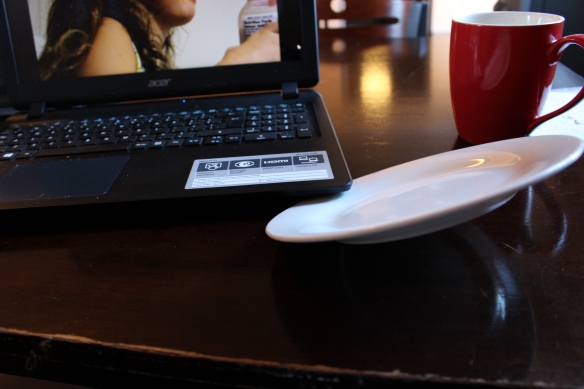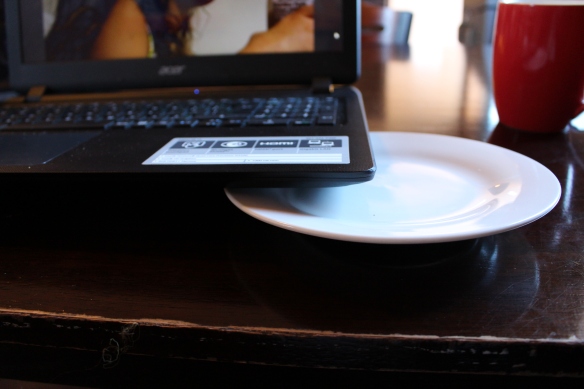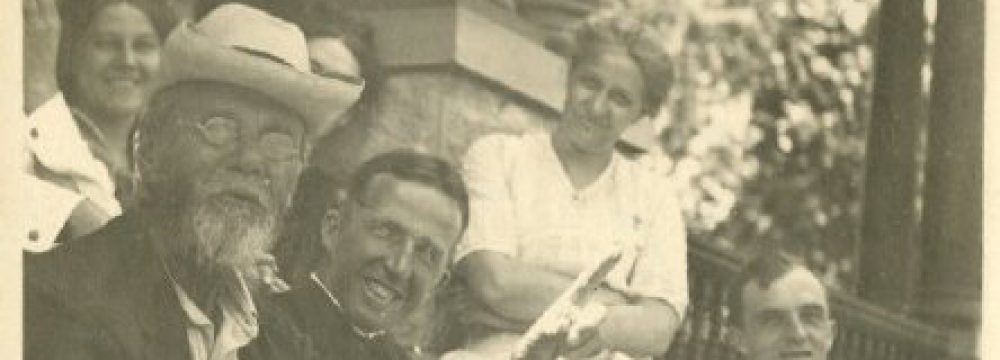 Osteopathic manual therapeutics are based on mechanical principles. They are often discussed poorly within the profession however they do form the basis of the concept that governs the manual aspects. These concepts hold true in other manual professions as well. These concepts are present in heavy industry, engineering, math, and anywhere else you look.
Osteopathic manual therapeutics are based on mechanical principles. They are often discussed poorly within the profession however they do form the basis of the concept that governs the manual aspects. These concepts hold true in other manual professions as well. These concepts are present in heavy industry, engineering, math, and anywhere else you look.
I found a very interesting example of a systematic approach involving the mechanical principles that govern Osteopathic manual therapeutics described in almost the same way when reading a post from a very highly respected and successful jiu-jitsu instructor named John Danaher:
Just as a way to show the similarity between the above post from Mr. Danaher and those things that are at the root of Osteopathic manual therapeutics we may look to Dr. Still:
“87 I will say to the student of osteopathy, to judges, jurors, lawyers and all interested, that there are many ways to set bones; there are many ways to bring them from their abnormal position back to their normal articulation. In adjusting bones the mechanic is governed by three principles—the lever, the screw and the wedge. To remove a bone or any substance from its position the mechanic seeks to find and make a fixed point then he makes use of the principle of the lever, the screw or the wedge and with his hands gets the movement desired.” Osteopathy: Research and Practice (1910)
Jiu-jitsu is known as the gentle art and, as all grappling arts, is broadly based on mechanical advantage. Osteopathic manual therapeutics in particular has, at its root, the principles of mechanical advantage. When practiced effectively, Osteopathic manual therapeutics leads to very minimal energy expenditure for the practitioner as they utilize mechanical advantages very efficiently.
Let us briefly examine the concepts set forth here – we will look at the lever, wedge, and screw as stated by Still as well as the lever and fulcrum/wedge as stated by Mr. Danaher. We will also briefly speak about directionality of force and off-balancing the opponent as stated by Mr. Danaher.
What of the lever, wedge, and screw in relation to the lever and fulcrum as well as wedge as stated by these two fine men, Mr. Danaher and Dr. Still? An examination of terms is a good place to begin:
Lever – A lever ( or US: ) is a simple machine consisting of a beam or rigid rod pivoted at a fixed hinge, or fulcrum. A lever is a rigid body capable of rotating on a point on itself. On the basis of the location of fulcrum, load and effort, the lever is divided into three types. It is one of the six simple machines identified by Renaissance scientists. A lever amplifies an input force to provide a greater output force, which is said to provide leverage. The ratio of the output force to the input force is the mechanical advantage of the lever
Fulcrum – noun, plural fulcrums, fulcra
[foo l-kruh, fuhl-] (Show IPA)
1. the support, or point of rest, on which a lever turns in moving a body.
Wedge – A
wedge is a
triangular shaped tool, and is a portable
inclined plane, and one of the six classical
simple machines.
It can be used to separate two objects or portions of an object, lift up an object, or hold an object in place. It functions by converting a force applied to its blunt end into forces perpendicular (normal) to its inclined surfaces. The
mechanical advantage of a wedge is given by the ratio of the length of its slope to its width.
Screw…here is where something gets, well, screwy. Looking up the term screw one comes across the following
statement:
“The basic meaning of the word
screw has long involved the idea of a helical screw thread, but the Archimedes screw and the screw
gimlet (like a corkscrew) preceded the fastener.”
So, when considering the use of the term “screw” by Dr. Still we may get in to a confusing place where, when he learned the term, in the mid 1800’s, the term screw may have been a mixed term as inexpensive creation of screws as they are understood today was very new so the term may have meant more than one thing. It is not perfectly clear how he used it but looking at the
gimlet may also help broaden the discussion where we see a definition as follows:
“A
gimlet is a
hand tool for
drilling small holes, mainly in wood, without splitting. It was defined in
Joseph Gwilt‘s
Architecture (1859) as ‘a piece of steel of a semi-cylindrical form, hollow on one side, having a cross handle at one end and a worm or screw at the other’.”
Regardless of the specific meaning of the word which Dr. Still was using (as he may have been blending both or other unclear meanings which I am not aware of) what we
likely gain from the term “
screw” is
rotatory motion along the axis of a lever (which may be the patient’s body in a long lever situation or the practitioner’s body in a short lever situation…or the patient’s body in a patient active short lever situation). Another definition (likely the most useful) is:
All of the terms defined above refer to things which create mechanical advantage. Mechanical advantage overcomes resistance. Instead of actively FORCING through a situation, the concept described by Dr. Still and Mr. Danaher is to OVERCOME RESISTANCE WITH MECHANICAL ADVANTAGE. Osteopathic manual practice, regardless of any other terms used or frilly descriptions, is, in real time, predicated on securing and utilizing MECHANICAL ADVANTAGE. I am in the process of meagerly learning jiu-jitsu without a gi (which may simply be called grappling however, as I study it, it comes from a root of Brazilian jiu-jitsu) and it would seem, from my novice observation, that jiu-jitsu is predicated on securing and utilizing MECHANICAL ADVANTAGE (as Mr. Danaher already described). Anything I have ever observed that provides an opportunity to succeed seems predicated on developing some form of advantage. When working with the human body in order to restore motion and, hopefully, other factors relating to health, securing mechanical advantage seems to be extremely useful. In an observational sense it would seem that the proliferation of things such as foam rollers, resistance bands in rehabilitative settings, wedged weight lifting shoes, self massage tools, utilizing a ball for self massage (of varying firmness), and other things have, at their root, the concept of attempting to secure mechanical advantage.
To further the discussion on mechanical advantage we turn back to the original post from Mr. Danaher to look at the concepts of directionality of force and off balancing an opponent (
kuzushi). With respect to directionality of force within Osteopathic manual practice it may be simply stated that the direction of the lever (short or long) is predicated upon engagement of barrier (direct to bind or indirect away from bind) which is dictated by tissue response in the moment (so you must be
present, attentive, observant, and responsive). The direction of leverage in treatment is crucial to the effectiveness of treatment. With respect to the concept of kuzushi we will first look at a definition:
“The noun comes from the
transitive verb kuzusu (崩す), meaning
to level, pull down, destroy or demolish.
[1] As such, it is refers to not just an unbalancing, but the process of putting an opponent to a position, where his stability, hence the ability to regain uncompromised balance for attacking is destroyed.”
Initially this seems like the reverse of manual therapeutics…let us look slightly closer:
“The methods of effecting kuzushi depend on
maai (combative distance) and other circumstances. It can be achieved using
tai sabaki (body positioning and weak lines), taking advantage of the opponents actions (push when pulled, pull when pushed),
atemi (strikes), or a combination of all three.”
Now, we have something presented above that may be more of use. The actual creation of the off balancing of the opponent so that they may not be able to counter has some useful concepts attached to it. The combative distance synchronizes with the position of the practitioner in relation to the patient (here is an
article I wrote about the concept of practitioner positioning which I will continue to expand on over time). The concept of body positioning and weak lines relates again to practitioner position and leverage (the weak lines). Reversing slightly we may consider “the process of putting an opponent to a position, where his stability, hence the ability to regain uncompromised balance for attacking is destroyed.” There is a concept embedded in the previous description that describes obtaining advantage which, in fighting, means mechanical advantage which is achieved through appropriate position, angles, and leverage…all of which are true in manual therapeutics as well.
Now, to move backwards again, in both the statements of Dr. Still and Mr. Danaher we see the use of the concepts of
simple machines (lever, wedge, and screw are considered simple machines) about which the following may be said:
“A
simple machine is a mechanical device that changes the direction or magnitude of a
force.
[2] In general, they can be defined as the simplest mechanisms that use
mechanical advantage (also called
leverage) to multiply force”
So, we are looking at using or mimicking things that multiply force or change the direction of force. To mimic these simple machines we need to use the things generally described as we previously discussed the concept of kuzushi – combative distance (in manual therapeutics this is more accurately described as practitioner position in relation to the patient) as well as body positioning (this is the position of the patient and the practitioner) and weak lines. The aim is to create positioning so that there is no option for a motion other than the intended one and, that large amounts of effort are not required. This is not always achievable but it is the aim. To create a situation whereby only the intended motion occurs the practitioner may use the table or their own body to stabilize the majority of the patient’s body followed by application of a fixed point/fulcrum and utilization of leverage.
What is written above is concepts that will be further investigated over time. The actual creation of these concepts in relation to manual treatment will be displayed so that there are firm examples. As it stands right now there are descriptions of the concepts in many words…examples are required.
 Osteopathic manual therapeutics are based on mechanical principles. They are often discussed poorly within the profession however they do form the basis of the concept that governs the manual aspects. These concepts hold true in other manual professions as well. These concepts are present in heavy industry, engineering, math, and anywhere else you look.
Osteopathic manual therapeutics are based on mechanical principles. They are often discussed poorly within the profession however they do form the basis of the concept that governs the manual aspects. These concepts hold true in other manual professions as well. These concepts are present in heavy industry, engineering, math, and anywhere else you look.

Pingback: Lever, Wedge, and Screw… | Classical Osteopathy in Ontario